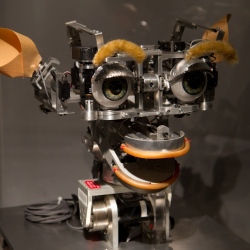
Currently scientists use the Turing test, named after computer scientist Alan Turing, which evaluates whether an AI can convince a judge that it is human in a conversation. Prof Mark Riedl, from the Georgia Institute of Technology, is proposing a new test. It would ask a machine to create a convincing poem, story or painting.
Dubbed Lovelace 2.0 it is an iteration of a previous Lovelace Test, proposed in 2001. Named after one of the first computer programmers, the original test required an AI to create something that it would be incapable of explaining how it was created. Lovelace 2.0 develops that idea.
"For the test, the artificial agent passes if it develops a creative artefact from a subset of artistic genres deemed to require human-level intelligence and the artefact meets certain creative constraints given by a human evaluator," explained Prof Riedl.
The artefact could be painting, poetry, architectural design or a fictional story. "Creativity is not unique to human intelligence, but it is one of the hallmarks of human intelligence," said Prof Riedl. Algorithms have already created stories and paintings although according to Prof Riedl "no existing story generation system can pass the Lovelace 2.0 test".
